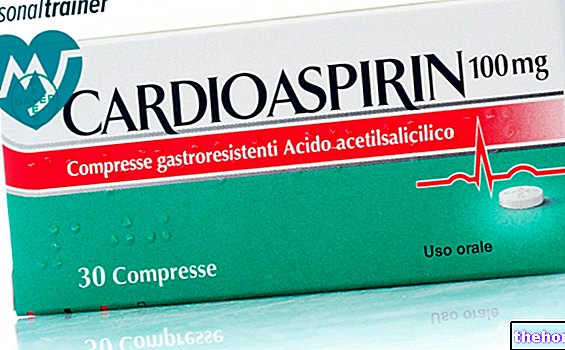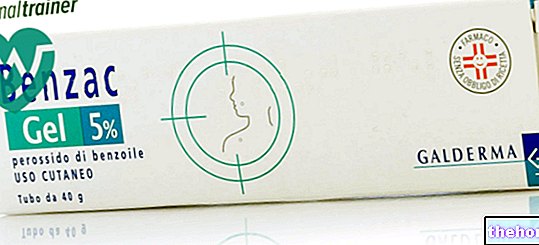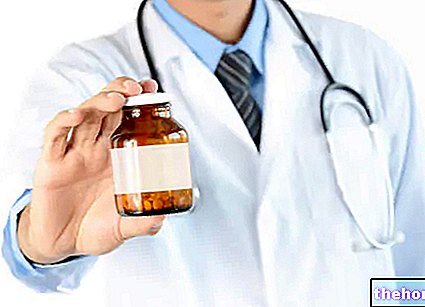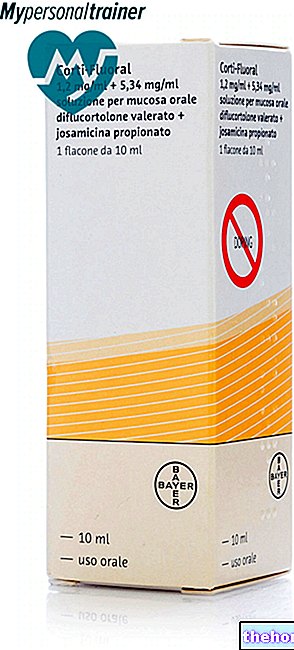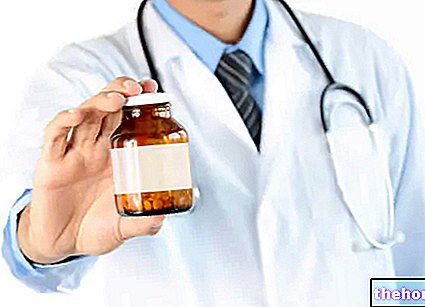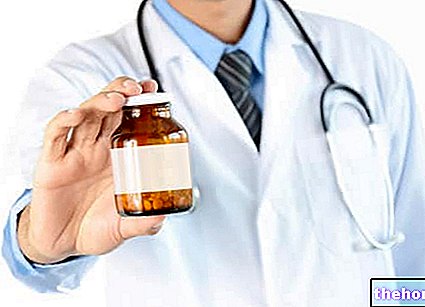Active ingredients: Neostigmine (neostigmine methyl sulfate)
Prostigmine solution for injection
Indications Why is Prostigmine used? What is it for?
Pharmacotherapeutic group
Prostigmine belongs to the therapeutic class of parasympathomimetic drugs, of the anticholinesterase type.
Indications
In surgery for pre-and post-operative prophylaxis of intestinal atony.
Symptomatic treatment of myasthenia gravis.
In anesthesiology as an antagonist of curarizers (non-depolarizing).
Contraindications When Prostigmine should not be used
Hypersensitivity already known to the drug (and to bromides for tablets) or to any of the excipients.
Asthma, Parkinson's disease, mechanical obstruction of the digestive and genitourinary tracts, peritonitis.
Precautions for use What you need to know before taking prostigmine
The product should be used with caution in subjects suffering from bradycardia, recent myocardial infarction, vagotonia, hyperthyroidism, cardiac arrhythmias, peptic ulcer, spastic bronchitis.
When administering large doses, a previous or simultaneous injection of atropine is recommended.
Interactions Which drugs or foods may change the effect of Prostigmine
Prostigmine synergizes the effect of depolarizing fragaci.
Some general and local anesthetics, antiarrhythmic drugs, aminioglycoside antibiotics and other substances that interfere with neuromuscular transmission should be used with caution during treatment with the product, especially in subjects suffering from severe amiaasthenia. Prostigmine can reinforce the depressing effect on the respiratory activity of morphine derivatives and barbiturates.
Warnings It is important to know that:
Neostigmine should not be used in conjunction with depolarising muscle relaxant drugs (such as succinylcholine).
The medicine is not contraindicated for people with celiac disease.
Pregnancy and breastfeeding
Although the risk of teratogenesis is low, the use of Prostigmine in the first months of pregnancy will be avoided, as well as for all drugs, except in cases of absolute necessity.
It is not known whether prostigmine is also excreted in milk; in any case, as this occurs with many drugs, the use of the product is not recommended during breastfeeding, in order not to expose the infant to the risk of undergoing the action of the drug and its potential serious side effects.
Dose, Method and Time of Administration How to use Prostigmine: Posology
In surgery for the pre- and post-operative prophylaxis of intestinal atony, the injection of Prostigmine is generally done the day after the operation. Intestinal peristalsis occurs 20 and 30 minutes after the slow intramuscular or intravenous subcutaneous injection of 1 ampoule (1 ml).
The bowel evacuation can be facilitated by an enema of 150-200 ml with 15-20% glycerin, preferably administered about 30 minutes after the injection. If evacuation does not occur within 4-5 hours, the injection can be repeated.
In the symptomatic treatment of myasthenia gravis the average dosage is 10 tablets (150 mg) per 24 hours.
In establishing the dosage and the interval of the single administrations, the individual response and the particular needs of the individual patient must be taken into account, as well as the phase of exacerbation or remission of the disease. If the oral route is impractical (for example in case of crisis acute myasthenics) the parenteral route can be used (1 vial of 0.5 mg subcutaneously or intramuscularly; subsequent doses will be established based on the patient's response), returning to oral administration as soon as possible.
In anesthesia, as an antagonist to curarizers (to neutralize muscle relaxation due to curare and curare-like). Typically 0.5-2 mg administered slowly intravenously. N.B. Prostigmine only antagonizes the action of curare and curare-like synthetic muscle relaxants, ie non-depolarizing. On the other hand, in the case of depolarizing drugs there is a synergistic effect. The action of muscle relaxants at the ganglion attachment point is not substantially modified. Even in cases of overdosage of curare the doses of Prostigmine indicated above must not be significantly exceeded.
Overdose What to do if you have taken too much Prostigmine
In case of accidental or voluntary overdose, the symptoms may be as follows: sweating, nausea, vomiting, drooling, bradycardia, syncope, miosis, abdominal cramps, diarrhea, muscle fasciculations and contractions.
In particularly severe cases, muscle weakness may occur which, involving the respiratory muscles, can lead to apnea and lead to cerebral anoxia.
In the course of the treatment of myasthenic subjects, it is of particular importance to clinically distinguish the cholinergic crises of overdose from the myasthenic crises of the disease in progress, as the treatment of these two syndromes differs radically.
For the treatment of the cholinergic crisis due to overdose of Prostigmine, the use of anticholinesterase drugs must be stopped immediately and atropine sulphate administered at the rate of 0.5 mg intravenously, to be repeated every 20 minutes subcutaneously or intramuscularly. It is also necessary hospitalization in a specialized center for any respiratory assistance.
Side Effects What are the side effects of Prostigmine
Muscle fasciculations, salivation, abdominal colic, diarrhea are most commonly observed. More rarely, the following side effects have been reported:
- allergic: various types of reactions and anaphylaxis;
- neurological: dizziness, convulsions, loss of consciousness, drowsiness, headache, dysarthria, miosis, visual changes;
- cardiovascular: cardiac arrhythmias (bradycardia, tachycardia, atrio-ventricular block, nodal rhythm), non-specific changes to the ECG, cardiac arrest, syncope, hypotension;
- bronchopulmonary: increased pharyngeal and bronchial secretions, dyspnoea, bronchospasm, depression and respiratory arrest;
- dermatological: urticaria and skin rashes;
- gastrointestinal: nausea, vomiting, flatulence;
- genitourinary: pollakiuria;
- muscle: cramps and spasms, arthralgia;
- various: sweating, warmth, weakness.
Hypersensitivity reactions may occur in predisposed subjects.
It is advisable to consult your doctor or pharmacist in case of unwanted effects not mentioned in this leaflet.
Expiry and Retention
Attention do not use the medicine after the expiry date indicated on the package.
KEEP THE MEDICINAL PRODUCT OUT OF THE REACH AND SIGHT OF CHILDREN.
Deadline "> Other information
Composition
Prostigmine solution for injection: one ampoule of 1 ml contains the active ingredient neostigmine methyl sulfate 05 mg.
Excipients: sodium chloride, water for injections.
Prostigmine tablets: One prostigmine tablet contains the active ingredient neostigmine bromide 15 mg.
Excipients: lactose, magnesium stearate, talc, starch.
Packs
Prostigmine solution for injection: 6 ampoules 0.5 mg.
Prostigmine tablets: 20 tablets 15 mg.
Source Package Leaflet: AIFA (Italian Medicines Agency). Content published in January 2016. The information present may not be up-to-date.
To have access to the most up-to-date version, it is advisable to access the AIFA (Italian Medicines Agency) website. Disclaimer and useful information.
01.0 NAME OF THE MEDICINAL PRODUCT -
PROSTIGMIN
02.0 QUALITATIVE AND QUANTITATIVE COMPOSITION -
Prostigmine solution for injection
One vial contains:
Active principle:
neostigmine methyl sulfate 0.5 mg
Prostigmine tablets:
One tablet contains:
Active principle:
neostigmine bromide 15 mg
03.0 PHARMACEUTICAL FORM -
Prostigmine is available as tablets for oral use and in ampoules for intramuscular, subcutaneous, or slow intravenous injection.
04.0 CLINICAL INFORMATION -
04.1 Therapeutic indications -
In surgery for pre-and post-operative prophylaxis of intestinal atony.
Symptomatic treatment of myasthenia gravis.
In anesthesiology as an antagonist of curarizers (non-depolarizers).
04.2 Posology and method of administration -
In surgery for the pre- and post-operative prophylaxis of intestinal atony, the injection of Prostigmine is generally done the day after the operation. Intestinal peristalsis occurs 20 and 30 minutes after the slow intramuscular or intravenous subcutaneous injection of 1 ampoule (1 ml).
The bowel evacuation can be facilitated by an enema of 150-200 ml with 15-20% glycerin, preferably administered about 30 minutes after the injection. If evacuation does not occur within 4-5 hours, the injection can be repeated.
In the symptomatic treatment of myasthenia gravis the average dosage is 10 tablets (150 mg) per 24 hours. In establishing the dosage and the interval of the single administrations, the individual response and the particular needs of the individual patient must be taken into account, as well as the phase of exacerbation or remission of the disease. If the oral route is impractical (for example in case of crisis acute myasthenics) the parenteral route can be used (1 ampoule of 0.5 mg subcutaneously or intramuscularly; subsequent doses will be established based on the patient's response), returning to oral administration as soon as possible.
In anesthesia, as an antagonist to curarizers (to neutralize muscle relaxation due to curare and curare-like). Typically 0.5-2 mg administered slowly intravenously.
N.B. Prostigmine only antagonizes the action of curare and curare-like synthetic muscle relaxants, ie non-depolarizing. On the other hand, in the case of depolarizing drugs there is a synergistic effect. The action of muscle relaxants at the ganglion attachment point is not substantially modified. Even in cases of overdosage of curare the doses of Prostigmine indicated above must not be significantly exceeded.
04.3 Contraindications -
Known hypersensitivity to the drug (and to bromides for tablets) or to any of the excipients, asthma, Parkinson's disease, mechanical obstruction of the digestive and genitourinary tracts, peritonitis.
04.4 Special warnings and appropriate precautions for use -
Neostigmine should not be used in conjunction with depolarising muscle relaxant drugs (such as succinylcholine).
The product should be used with caution in subjects suffering from bradycardia, recent myocardial infarction, vagotonia, hyperthyroidism, cardiac arrhythmias, peptic ulcer, spastic bronchitis.
When administering large doses, a previous or simultaneous injection of atropine is recommended.
Keep out of reach of children.
04.5 Interactions with other medicinal products and other forms of interaction -
Prostigmine synergizes with the effect of depolarizing drugs.
Some general and local anesthetics, antiarrhythmic drugs, aminoglycoside antibiotics and other substances that interfere with neuromuscular transmission should be used with caution during treatment with the product, especially in subjects with myasthenia gravis.
Prostigmine can reinforce the depressing effect on the respiratory activity of morphine derivatives and barbiturates.
04.6 Pregnancy and breastfeeding -
Although the risk of teratogenesis is low, the use of Prostigmine in the first months of pregnancy will be avoided, as well as for all drugs, except in cases of absolute necessity.
It is not known whether prostigmine is also excreted in milk; in any case, as this occurs with many drugs, the use of the product is not recommended during breastfeeding, in order not to expose the infant to the risk of undergoing the action of the drug and its potential serious side effects.
04.7 Effects on ability to drive and use machines -
No evaluations of the drug on these capacities have been carried out to date
04.8 Undesirable effects -
Muscle fasciculations, salivation, abdominal colic, diarrhea are most commonly observed. More rarely, the following side effects have been reported:
allergic: various types of reactions and anaphylaxis;
neurological: dizziness, convulsions, loss of consciousness, drowsiness, headache, dysarthria, miosis, visual changes;
cardiovascular: cardiac arrhythmias (bradycardia, tachycardia, atrio-ventricular block, nodal rhythm), non-specific changes to the ECG, cardiac arrest, syncope, hypotension;
bronchopulmonary: increased pharyngeal and bronchial secretions, dyspnoea, bronchospasm, depression and respiratory arrest;
dermatological: urticaria and skin rashes;
gastrointestinal: nausea, vomiting, flatulence;
genitourinary: pollakiuria;
muscle: cramps and spasms, arthralgia;
various: sweating, warmth, weakness.
Hypersensitivity reactions may occur in predisposed subjects.
04.9 Overdose -
In case of accidental or voluntary overdose, the symptoms may be as follows: sweating, nausea, vomiting, drooling, bradycardia, syncope, miosis, abdominal cramps, diarrhea, muscle fasciculations and contractions.
In particularly severe cases, muscle weakness may occur which, involving the respiratory muscles, can lead to apnea and lead to cerebral anoxia.
In the course of the treatment of myasthenic subjects, it is of particular importance to clinically distinguish the cholinergic crises of overdose from the myasthenic crises of the disease in progress, as the treatment of these two syndromes differs radically.
For the treatment of the cholinergic crisis due to overdose of Prostigmine, the use of anticholinesterase drugs must be stopped immediately and atropine sulphate administered at the rate of 0.5 mg intravenously, to be repeated every 20 minutes subcutaneously or intramuscularly. It is also necessary hospitalization in a specialized center for any respiratory assistance.
05.0 PHARMACOLOGICAL PROPERTIES -
05.1 "Pharmacodynamic properties -
The cholinergic properties of Prostigmine are due to a stabilization of acetylcholine by inhibiting cholinesterase. Thus the action of acetylcholine, physiological mediator at the level of central and peripheral cholinergic nerve endings, is intensified and prolonged. The same also happens for barbiturates and opiates.
Prostigmine also has a direct "cholinomimetic action on skeletal muscle."
05.2 "Pharmacokinetic properties -
The inhibitory action on cholinesterase is reversible.
Administered intramuscularly, neostigmine methyl sulfate is rapidly absorbed.
In a study of 5 patients with myasthenia gravis the plasma peak occurred after 30 minutes, while the half-life ranged from 51 to 90 minutes. Approximately 80% of the drug was eliminated in the urine within 24 h; 50% in unchanged form and 30% in metabolized form.
Metabolization occurs by hydrolysis and by the hepatic microsomal enzymes.
The protein bond with the serum albumin fluctuates from 15 to 25%.
With intravenous administration, the plasma half-life ranges from 47 to 60 minutes.
The pharmacological effects of Prostigmine occur 20-30 minutes after intramuscular administration and last approximately 2.5 to 4 hours.
Orally administered neostigmine bromide is poorly absorbed from the gastrointestinal tract. (Approximately 1-2% of a 30 mg dose given to fasting myasthenic patients)
The plasma peak occurs between the 1st and the 2nd hour with considerable individual variations.
As a rule, 15 mg of neostigmine bromide orally corresponds to approximately 0.5 mg of parenteral neostigmine methyl sulfate.
05.3 Preclinical safety data -
06.0 PHARMACEUTICAL INFORMATION -
06.1 Excipients -
One 0.5 mg vial contains:
sodium chloride 8.35 mg;
water for injections q.s. to 1 ml.
One 15 mg tablet contains:
lactose 150 mg;
magnesium stearate 0.25 mg;
talc 5.5 mg.
starch to taste to 230 mg
06.2 Incompatibility "-
No specific incompatibilities are known to date.
06.3 Period of validity "-
Validity of intact and correctly stored packages: 5 years.
06.4 Special precautions for storage -
Ordinary environmental conservation conditions (according to F.U. IX edition)
06.5 Nature of the immediate packaging and contents of the package -
Prostigmine 6 ampoules of 1 ml:
(glass vials according to F.U. enclosed in a cardboard box with enclosed leaflet).
Prostigmine 20 tablets of 15 mg:
(dark glass bottle with screw cap in thermoplastic material, contained in a cardboard box with enclosed leaflet).
06.6 Instructions for use and handling -
No particular instructions for use.
07.0 HOLDER OF THE "MARKETING AUTHORIZATION" -
Valeant Pharmaceuticals Germany GmbH
Düsseldorfer Straße, 40 A
D - 65760 Eschborn
Germany
08.0 MARKETING AUTHORIZATION NUMBER -
Prostigmine 6 ampoules AIC n °: 005277013
Prostigmine 20 tablets AIC n °: 005277025
09.0 DATE OF FIRST AUTHORIZATION OR RENEWAL OF THE AUTHORIZATION -
Renewal June 2005
10.0 DATE OF REVISION OF THE TEXT -
01/06/2006

